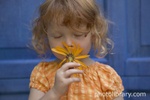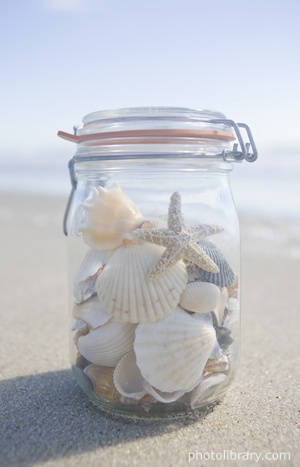We have much more to do and your continued support is needed now more than ever.
Tips to Keep Your Child’s Nature Collection Under Control
 If you’ve ever taken a walk in the woods, or on the beach, or pretty much anywhere else with kids, you know how much little folks love to collect things. What could be better than filling your pockets with pebbles, pine cones, seashells, and other natural treasures? Those pockets can get heavy fast, though. And what to do with the loot when you get home? Tame your nature collection with these three tips.
If you’ve ever taken a walk in the woods, or on the beach, or pretty much anywhere else with kids, you know how much little folks love to collect things. What could be better than filling your pockets with pebbles, pine cones, seashells, and other natural treasures? Those pockets can get heavy fast, though. And what to do with the loot when you get home? Tame your nature collection with these three tips.
-
Be Good Stewards.
Start a brief discussion with your child about what to take and what to leave. Some things are best enjoyed right where you find them and shouldn’t be disturbed or removed. But sometimes it’s fine to choose a few special objects to take home.
- Follow the rules. In protected areas such as state and national parks, collecting is almost always forbidden. Be sure to find out the policies of the places you visit.
- Collect memories. Try gathering intangibles. Take photos; make sketches; or simply soak up sights, sounds, and feelings to remember.
- If it’s alive, leave it be. Don’t collect things that are alive or that are part of an animal’s home. Wildflowers should always be enjoyed without picking, with the exception of dandelions and other similar, very common species. Also flowers you plant in your own garden are fair game—as long as you don’t mind!
- Look for lots. Avoid collecting things that are scarce. If you choose items that are abundant—a few acorns from a pile under a tree, for example—you can feel confident that removing a few won’t disturb the ecosystem.
-
Be Choosy.
To avoid ending up with drawers full of rocks and shells, try these tricks to limit how much comes home with you:
- Less is more. Collect all you like during your visit. But when it’s time to go, spend a few minutes selecting just one or two favorite items to keep. Return the rest for other visitors to enjoy.
- Live with limits. Keep a container somewhere handy, such as a small bag or bucket, for storing found objects. An egg carton is nice for sorting and arranging. When it’s full, it’s time to stop!
-
Be Creative.
Instead of letting found objects gather dust in drawers, make their stay in your home memorable.
 Show them off. Designate a place to display your finds, such as a nature table, shelf, or windowsill. Invite your child to help arrange the objects and rotate what’s on display as the seasons change. Add other things to make the space special, such as a tablecloth in a seasonal color, a candle, or a vase of flowers or branches.
Show them off. Designate a place to display your finds, such as a nature table, shelf, or windowsill. Invite your child to help arrange the objects and rotate what’s on display as the seasons change. Add other things to make the space special, such as a tablecloth in a seasonal color, a candle, or a vase of flowers or branches.- Design a centerpiece. Put groups of objects where you can admire them daily. Fill a glass jar with the prettiest pebbles you have collected. Arrange pine cones or shells in a basket. Make celebrations special by decorating your dining table with leaves, flowers, or other seasonal collections.
- Make a museum. If your child expresses interest in naming and categorizing objects, create a nature museum. Start with a container with many compartments (such as a tackle box), an assortment of jars, or a hanging shoe organizer. Have your child make labels for the objects that describe what they are and where they were found. Encourage your child to update the exhibits as time goes on.
- Get crafty. Use collected objects as material for art projects. Press flowers and leaves to decorate cards or placemats. Make a wreath or a mobile. Fashion mini-animals from pine cones, rocks, acorns, shells, and other things. Attach objects to magnets or picture frames for fun and functional gifts.
- Set them free. Every now and then, if your collection is getting unwieldy, have a ceremony in which you return items to nature. Toss rocks into a stream or shells into the sea one by one; let the wind carry away your leaves. Always do your best to return objects to the same habitats where you found them.
Kate Hofmann is a writer/editor for National Wildlife Federation’s Ranger Rick magazine and Eco-Schools USA program. She has a master’s degree in environmental education and loves to help kids, families, and teachers discover the beauty and benefits of time outside. A native of northern Michigan, she is surrounded by water and can often be found exploring the shores of the Great Lakes.





















